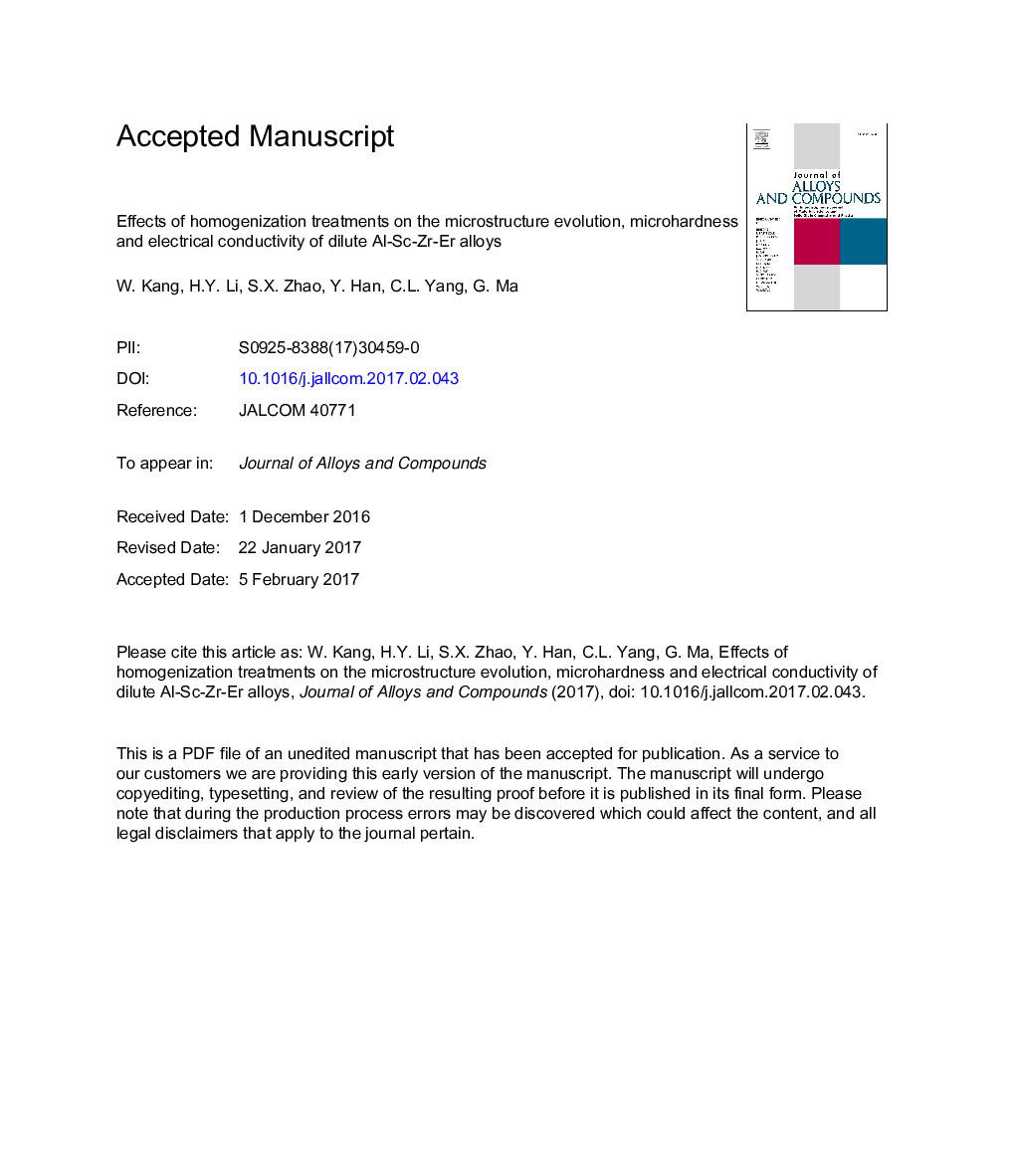| Article ID | Journal | Published Year | Pages | File Type |
|---|---|---|---|---|
| 5460042 | Journal of Alloys and Compounds | 2017 | 24 Pages |
Abstract
The effects of homogenization treatments on the microstructure evolution, microhardness and electrical conductivity of two dilute Al-Sc-Zr-Er alloys with different Zr contents were investigated. In both as-cast alloy, Zr and Sc are respectively concentrated at the dendrite interiors and the interdendritic regions, and Er is segregated at the primary Al3Er phases within grain and discontinuous intergranular phases with traces of Sc and Fe. The severe microsegregation of Zr induces the formation of the coarse Zr-rich precipitates in the high Zr alloy during homogenization. The composition of the coarse phase is analyzed by EPMA and STEM-HAADF and a corresponding model of its formation mechanism is proposed. The optimal homogenization duration of the both studied alloys depends on the segregation degree of Zr in the dendritic cells. For the high Zr alloy, the homogenization for 2 h at 640 °C eliminates the primary Al3Er phases and the intergranular Er/Sc-rich phases without the coarse Al3(Er,Sc,Zr) phases. For the low high Zr alloy, 24 h of homogenization at 640 °C eliminates successfully the microsegregation of Zr, Sc and Er, and induces the maximum aging strengthening increment.
Related Topics
Physical Sciences and Engineering
Materials Science
Metals and Alloys
Authors
W. Kang, H.Y. Li, S.X. Zhao, Y. Han, C.L. Yang, G. Ma,
